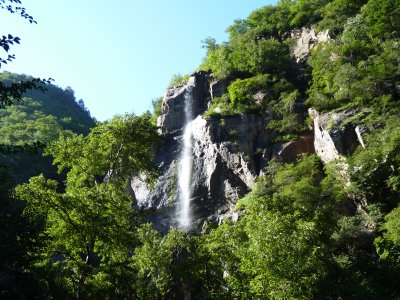
Well spotted!
They are two different, adjacent, provinces.
Technically they should be spelled the same, just that us foreigners are incapable of recognising the tones so an allowance is made.
I'm still none the wiser but hope you are.
We woke up to sunshine. Went for a walk in the Shuitao Valley and photographed a waterfall.
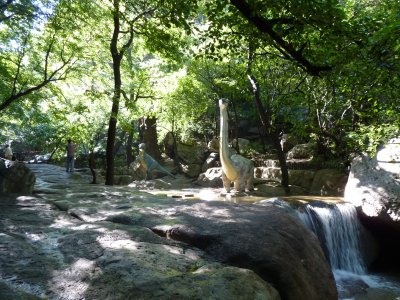
Recovering from the cold, we'd slowed down, Tardis running well, the sun was shining, I should have been happy.
Perhaps it was all the people. Perhaps it was the mass of concrete which had been used to "improve" the stream. And on a broader front perhaps being unable to escape from being a tourist.
This concrete dinosaur was completely out of place.
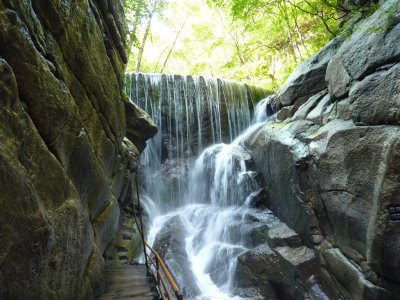
It has some remaining loess on top.
Yes, that's the track hanging off the side of the rock wall.
There was something about a cave and limestone on a sign.
It meant crawling through a 1m square hole while being sprayed with water.
I'm guessing the limestone bit was a bit of wishful thinking.
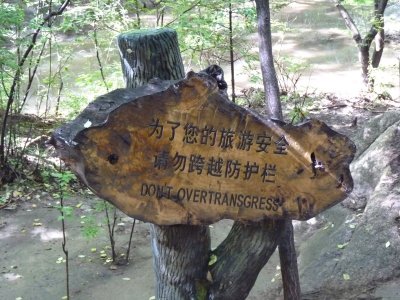
This one caught my attention as I couldn't quite work out what I was being urged to do.
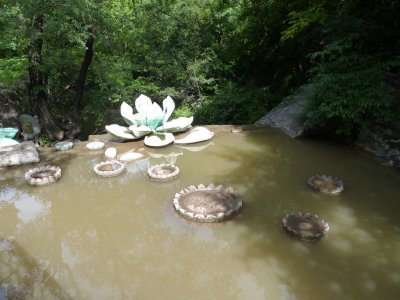
Lotus this time (at least I can recongise it now).
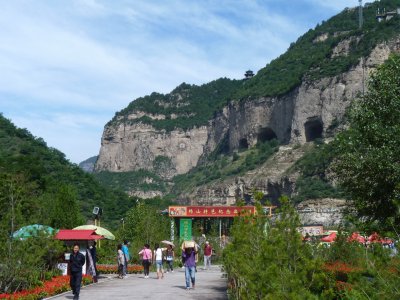
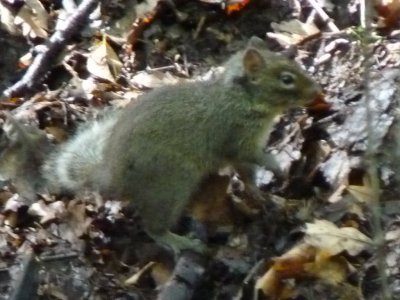
Happened on this young squirrel.
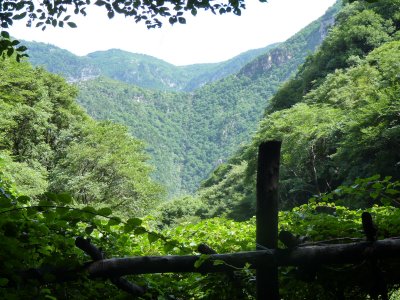
Met an old couple coming down who tried to explain that it wasn't a good track for old people.....
Opposite is the cable car, we are about level with the top.
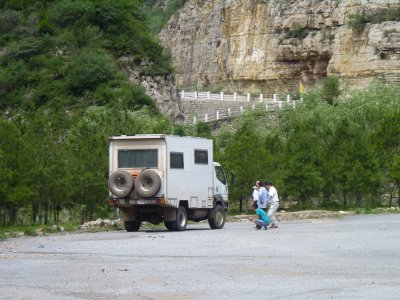
They were just looking and the usual friendly smiles as we approached.
Before we set out we were concerned that we would remain cocooned inside Tardis and not have any contact with locals.
We shouldn't have worried about China. Lot's of people have invited themselves in.

This required a bit of reversing and waving of hands before we were past.
Buses don't take prisoners. But they are mostly scratch free.

Driver was on the "safe" side.
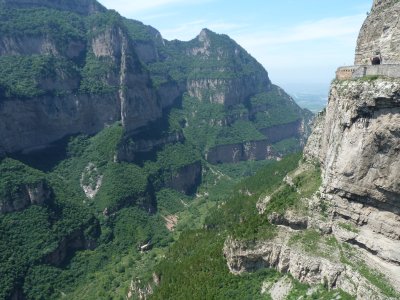
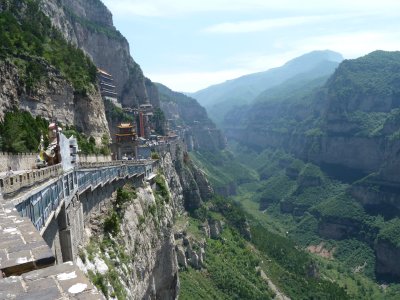
It followed the cliff face almost horizontally.
In places the cliff below the road was undercut.
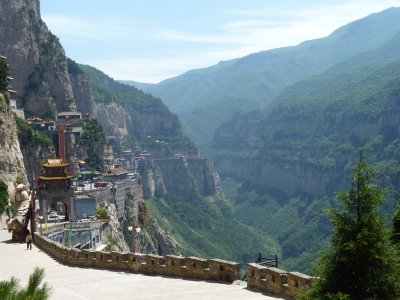
Or we forgot.
It really is as impressive as it looks.
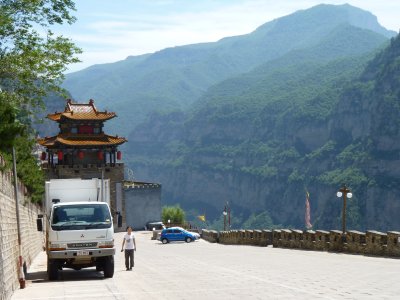
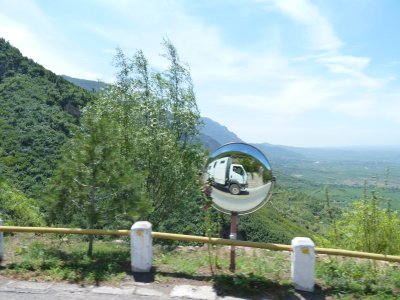
The mirrors helped enormously.
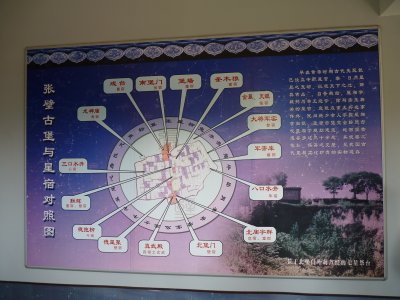
Surprise was when the guide started relating places in the village to a Chinese astrological map.
Apparently we Westerners don't have enough constellations.
We also began to learn a bit about the effect of the cultural revolution on this part of China. There's been little explicit mention of it so far.
Here it seemed to take the form of stories about how the villagers saved artefacts from destruction.
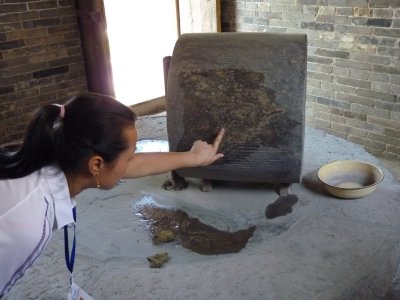
Our local guide sponged some water on it to show us the outline of the dragon in the stone....
I have a standing joke with Susanna that I have no imagination for such things.
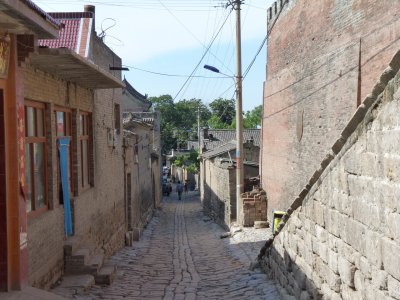
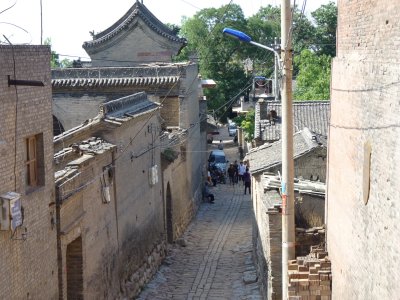
The village looks relatively "original".
Some of the houses go back to Qin Dynasty.
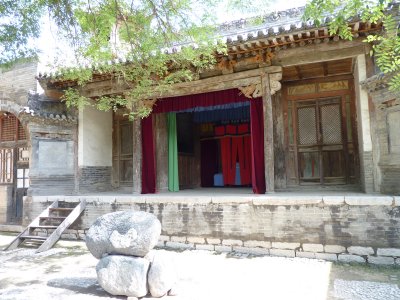
All of the temples in the village have stages. This is a small stage.
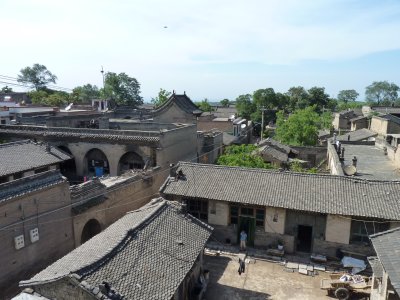
Not the same regulation design and courtyards as Han Cheng (Little Beijing) but definitely narrow lanes and courtyards.
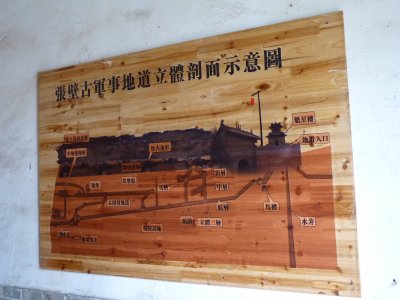
Its a walled village with a bit of military history.
Under the village is a couple of km of tunnels in the loess.
Dating back about 1300 years.
This is a map of the tunnels. They are between 2 to 3 m and about 10m underground.
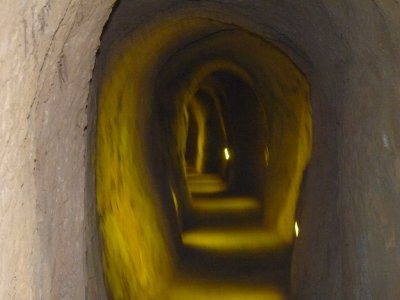
Just tall enough to walk through.
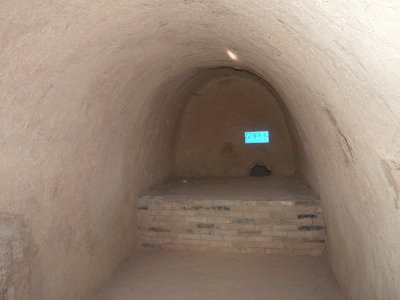
An earth bed as befits his status.
There is a communications hole to tunnels with soldiers.
Further on there was space for horses.
Also various traps and spy holes to limit and track the enemy should they intrude.
Ventilation seemed good. There was a well in the tunnels.
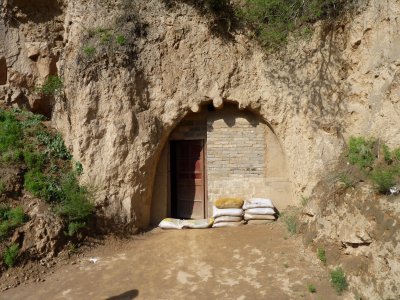
The village is surrounded on three sides by valley (and cliffs).
This was onto a walkway above a cliff.
There has been some water damage to the tunnels over the years.
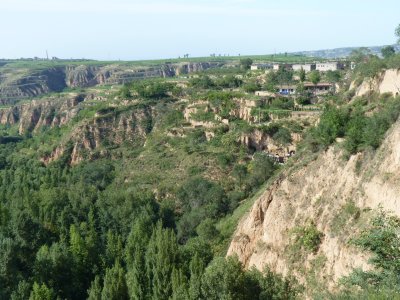
Now that I'm an expert I can describe it as "typical loess landscape".
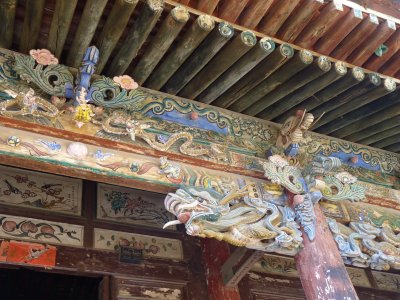
The murals surrounding the god were about 300 years old. Incompatible with flash photography.
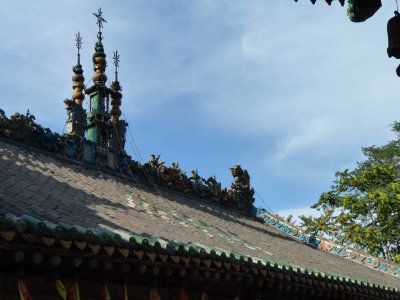
On the far edge are glazed tiles with a turquoise colour.
Our understanding (from general knowledge and our local guide) is that the knowledge of how to produce the colour has been lost to antiquity.
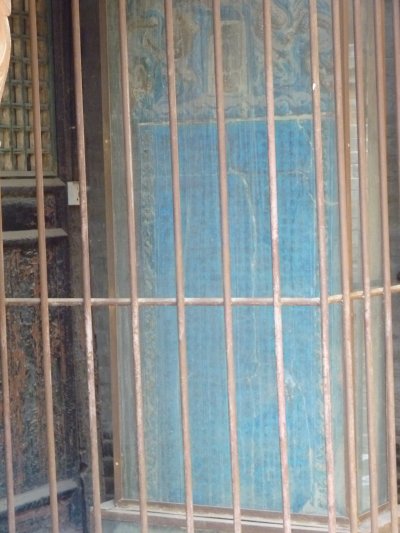
The other one is on the other side of the temple door.
Both encased in steel bars and glass.
We have no idea what the writing says but it looks important.
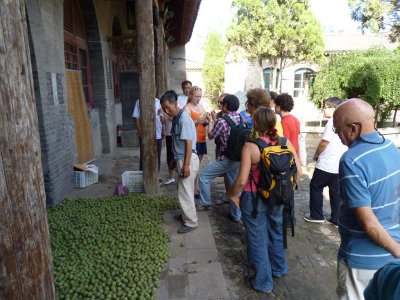
We studiously avoided eye contact and ignored each other as seems to be the predominant protocol.
We were mildly amused at the investigation of the round green things. It included cutting one open to eventually reach the nut inside.
A slow dawning of what it was.
If they'd have asked they would have been told "walnuts" by both ourselves and similarly mildly amused Chinese.
There are probably photographs of us floating about the web.
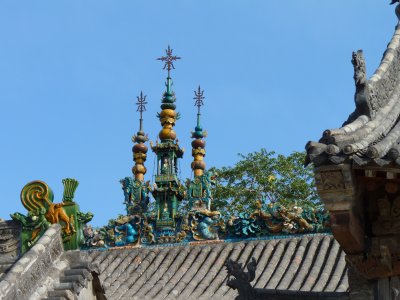
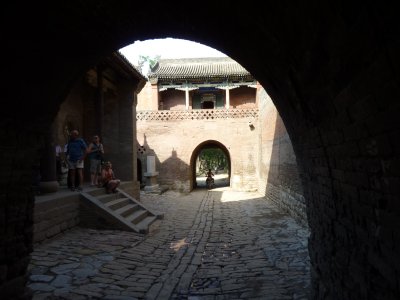
Some were for lanes and streets, two were for external access.
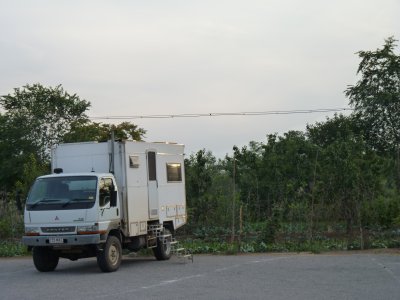
All nice and quiet and rural feeling.
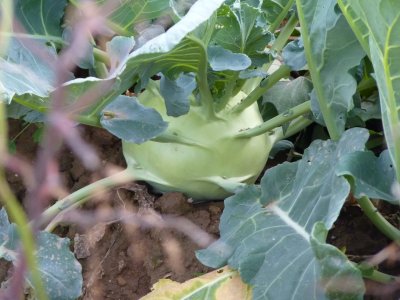
The leaves look like cabbage. Not sure about the bit in the middle.